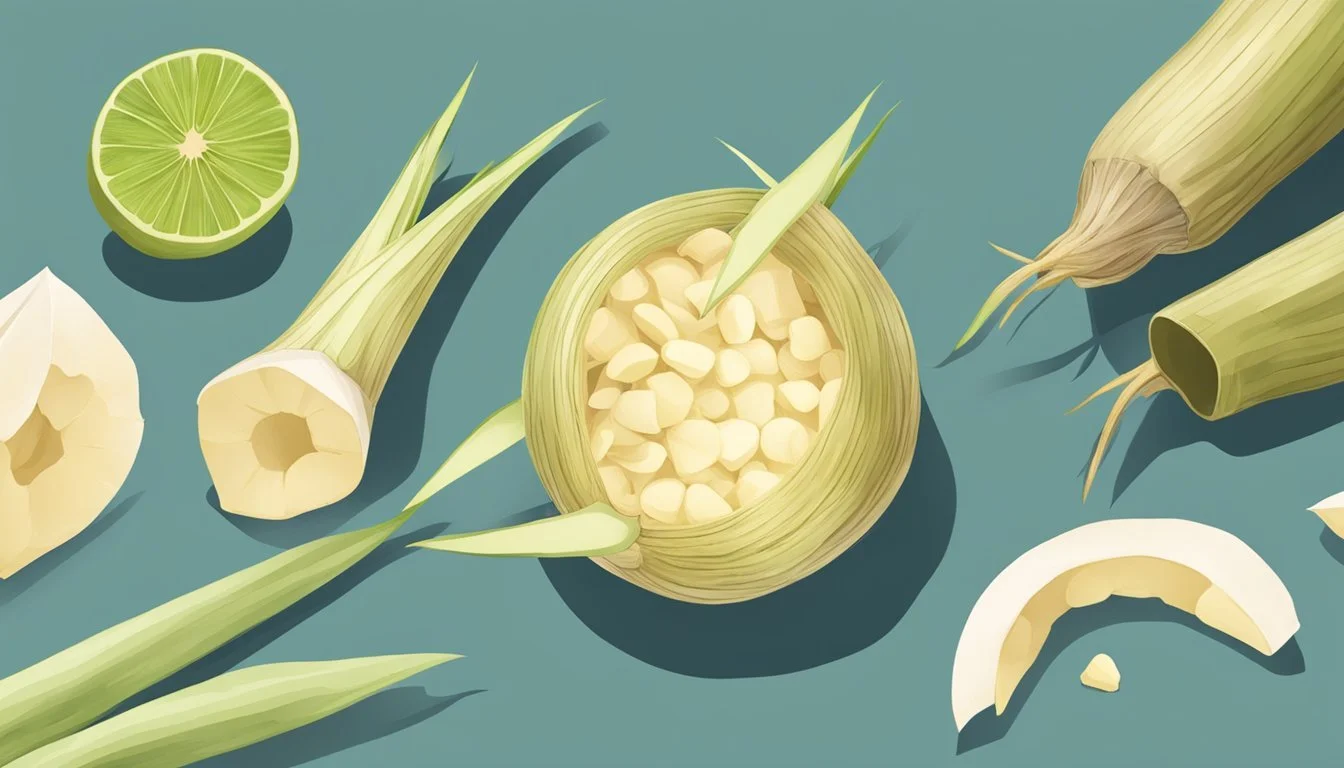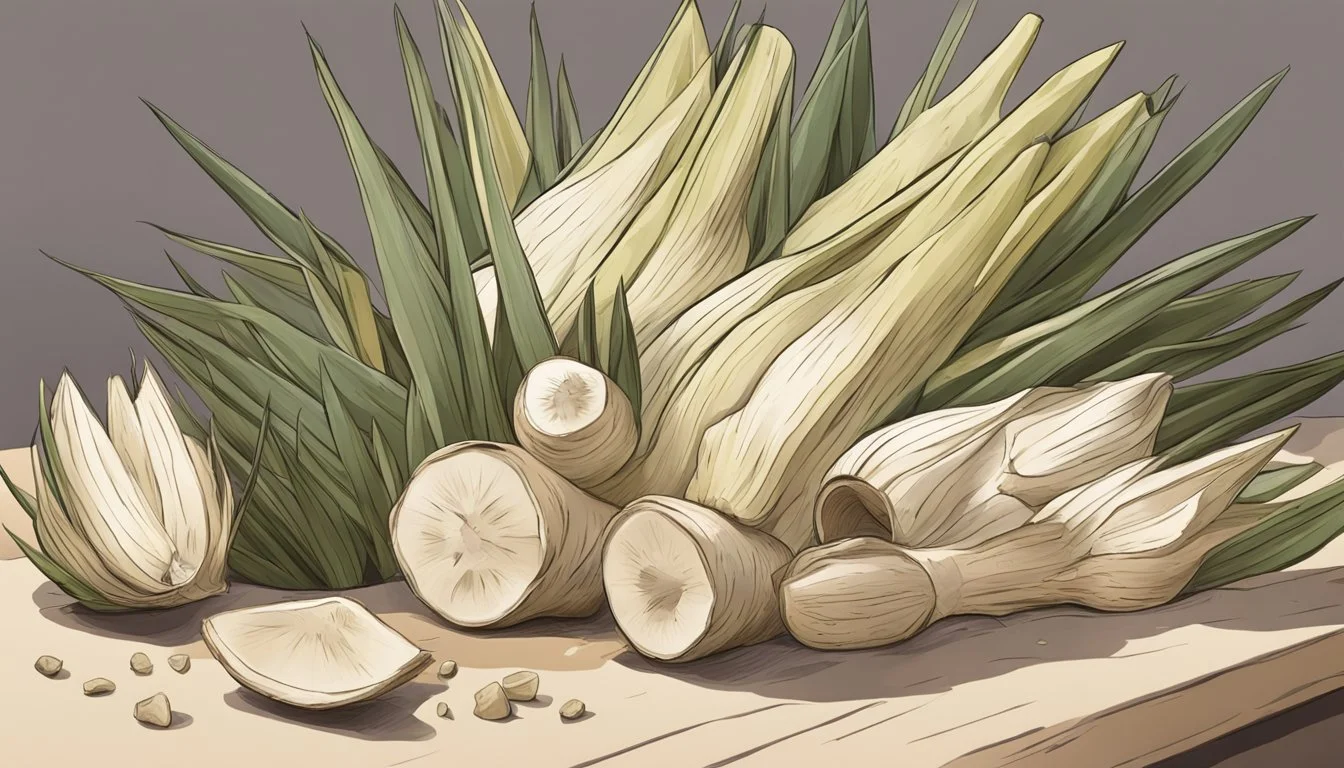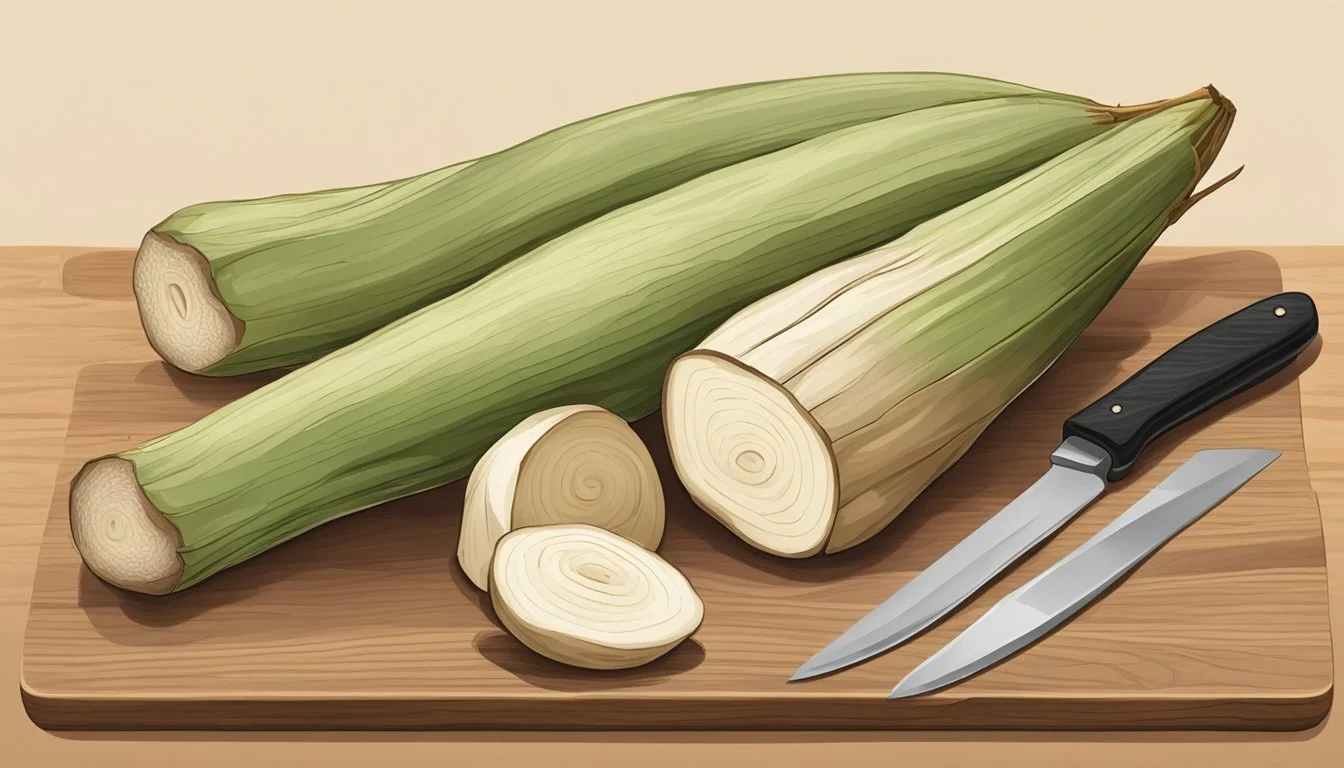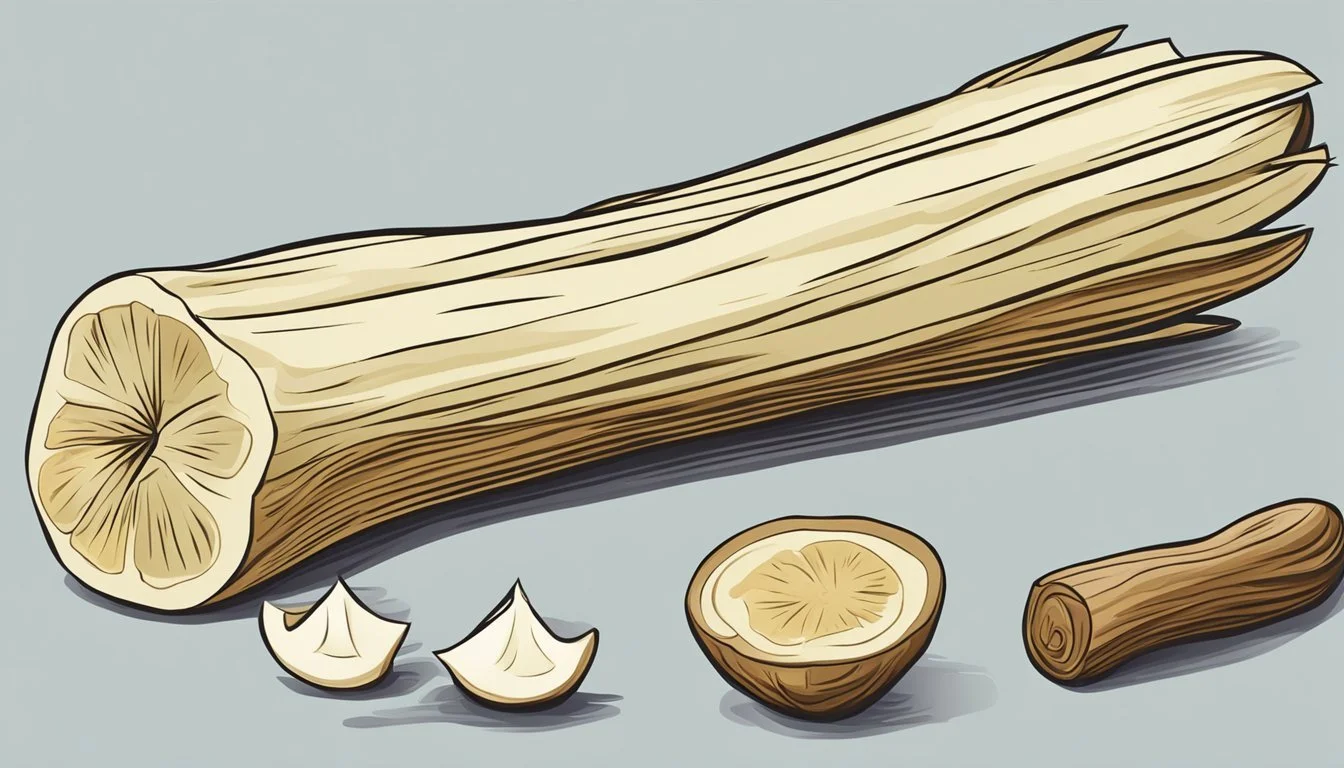How Do You Eat a Yucca Root?
Preparing and Enjoying This Versatile Vegetable
Yucca root, also known as cassava or manioc, is a versatile root vegetable that's a staple in many parts of the world. Often found in the produce section of grocery stores, this starchy tuber can be prepared and eaten in a variety of ways. Similar in appearance to a sweet potato, it has a tough exterior that requires peeling before cooking. Once the outer layer is removed, the white flesh of the yucca root can be cooked to create a soft and pleasant texture.
Eating yucca root provides a nutrient-dense food option that can be a good source of carbohydrates. It can be boiled, baked, fried, or mashed, much like potatoes. However, it's crucial to cook it properly, as the raw root contains cyanogenic glycosides, which can be harmful if ingested. When properly prepared, yucca root can be a healthy addition to one's diet, offering a unique flavor and beneficial nutrients.
Understanding Yucca Root
Yucca root, often confused with "yucca," is actually a different plant from the yucca shrub. Yuca, also known as cassava, is a tuberous root vegetable that is a staple in many parts of the world. It is rich in carbohydrates, making it an excellent source of energy. The root is also composed of dietary fiber which aids in digestion.
Nutritionally, yuca offers more than just energy. It contains vitamin C, essential for a healthy immune system, and significant levels of potassium, which is vital for heart and muscle function. Moreover, it is a source of vitamin B6, magnesium, and phosphorus, which are important for maintaining bodily functions. Yuca has a moderate amount of protein but contains minimal sugar, making it an appealing option for those monitoring their sugar intake.
The root is recognized for its health benefits, as it includes antioxidants that help combat free radicals, potentially reducing oxidative stress. Additionally, yuca contains manganese, a mineral that supports the body's enzyme functions.
However, it is imperative to note that yuca must be cooked properly before consumption, as it contains cyanogenic glycosides, which can produce cyanide when eaten raw or undercooked. Proper preparation involves peeling and boiling it until tender to remove these compounds. Some varieties also contain saponin, which can be toxic in large amounts but is reduced through cooking.
In summary, when prepared safely, yucca root is a beneficial addition to a balanced diet offering both nutritional value and health advantages.
Preparation Basics
Proper preparation of yucca root involves selecting a high-quality vegetable, thoroughly washing and removing its skin, and handling it safely to mitigate any potential health risks associated with cyanide naturally present in the plant.
Selecting Quality Yucca
When choosing yucca root in the produce section, shoppers should look for firm roots with a bark-like skin, which are free from blemishes or soft spots. A high-quality yucca root should feel heavy for its size, a sign of freshness and moisture content.
Washing and Peeling
Once a quality yucca root has been selected, it should be washed under running water to remove any dirt from the surface. Using a sharp knife or a sturdy vegetable peeler, the root's tough outer skin, as well as a thin layer beneath, needs to be removed until only the white flesh is exposed. This peeled yucca is then ready for further cooking processes.
Safe Handling to Avoid Cyanide
Yucca contains naturally-occurring cyanogenic glycosides which can release cyanide when improperly prepared. To ensure safety, one should never consume yucca raw. After peeling, yucca should be sliced and thoroughly cooked until soft, which reduces any harmful substances. It is advisable to discard the water used for boiling before consuming the yucca.
Cooking Techniques
Yucca root, also known as cassava, is a versatile starch-rich tuber that can be prepared through various cooking methods. Each technique brings out different textures and flavors from the yucca, rendering it a satisfying addition to many dishes.
Boiling Yucca
To boil yucca, one should first peel and chop the root into manageable pieces. In a large pot, cover the pieces with cold water and season with salt. Bring the water to a boil and then let it simmer for about 20 minutes or until the yucca is tender. Once done, the fibrous core can be removed before serving.
Baking Yucca
Baking yucca begins with peeling and slicing the root. After slicing, coat the pieces lightly in olive oil and place them on a lined baking sheet. Preheat the oven and bake at 400 °F (204 °C) until the pieces are golden and tender. Baked yucca can be enjoyed as a healthier alternative to fries.
Frying Yucca
For fried yucca, often termed yucca fries, start by boiling the root till partially cooked. After cooling, cut the yucca into strips and deep fry them in hot oil until they are crispy and golden brown. Serve immediately with a sprinkle of salt or a buttery dip.
Making Mashed Yucca
To make mashed yucca, one must begin by boiling the root until it is completely soft. Drain the water and while still warm, mash the yucca with butter and season to taste, similar to mashed potatoes. For a creamier texture, one may add a bit of olive oil or cream while mashing.
Recipe Ideas
When it comes to enjoying yucca root, transforming it into various delightful dishes can be both rewarding and delicious. Each recipe allows the unique texture and flavor of yucca to shine through, with preparation methods varying from frying to baking to boiling.
Yucca Fries
Yucca root makes for a superb alternative to traditional potato fries. Begin by peeling and cutting the yucca into fries, boiling them until semi-soft, and then frying or baking until they're golden and crispy. An oven-baked option offers a healthier version:
Ingredients:
Yucca root, peeled and sliced into fries
2 tbsp of cooking oil (for baking sheet)
Sea salt and black pepper to taste
Optional: garlic powder for extra flavor
Directions:
Preheat oven to 400 °F (204 °C).
Boil yucca fries for about 7-10 minutes until fork-tender.
Drain and pat dry.
Toss with oil and seasonings.
Line a baking sheet with parchment paper and spread the fries in a single layer.
Bake for 20-30 minutes, flipping halfway, until crispy.
Yucca Chips
One can also create thin, crispy yucca chips seasoned and baked to perfection. They serve as a gluten-free snacking option, providing a satisfying crunch with every bite.
Ingredients:
Thinly sliced yucca root
Cooking oil or spray
Salt and seasonings of choice
Directions:
Preheat oven to 375 °F (190 °C).
Slice the yucca root very thinly using a mandoline.
Place slices in a single layer on a prepared baking sheet.
Lightly oil and season the slices.
Bake until edges are crispy, about 10-15 minutes, watching carefully to prevent burning.
Yucca in Soups and Stews
For those seeking comfort food, yucca root can be added to soups and stews. It absorbs flavors beautifully and provides a gluten-free thickening agent when it breaks down, making the broth heartier and more flavorful.
Ingredients:
Cubed yucca root
Broth (vegetable, chicken, or beef)
Assorted vegetables and proteins as preferred
Directions:
Peel and cube yucca root.
Add cubes to the soup or stew of choice.
Cook until yucca is tender and flavors are well combined, typically for about 20-30 minutes.
Alternatives and Variations
The versatility of yucca root offers a myriad of alternatives and variations in culinary applications, ranging from tapioca production to its use in gluten-free diets. Yucca root can be transformed into different forms such as tapioca and cassava flour, providing options for those with dietary restrictions or preferences.
Tapioca From Yucca
Yucca root is the primary source of tapioca, a starch extracted and processed into various forms like tapioca pearls and tapioca flour. Tapioca pearls are widely used in beverages and sweets, most notably in bubble tea, where they lend a chewy texture. On the other hand, tapioca flour is a fine powder that acts as a thickening agent in gravies and soups.
Cassava Flour Uses
Cassava flour, made from the yucca root, is a reliable substitute for wheat flour in baking. It's particularly effective in recipes for cakes and cookies, providing a similar texture and bulk. Cassava flour's binding properties make it a suitable alternative for recipes that require a gluten structure, even though it's naturally gluten-free.
Yucca in Gluten-Free Diets
In gluten-free diets, yucca root serves as a staple ingredient. It's processed into flour that's used as a base in various gluten-free products. The flour offers a neutral flavor and it’s excellent for making gluten-free breads, pizza crusts, and even pasta, allowing individuals with gluten intolerance to enjoy these foods without adverse effects.
Serving and Presentation
When serving yuca root, presentation and accompaniments play a key role in enhancing the dish's flavors. Yuca's starchy nature makes it a versatile carbohydrate that pairs exceptionally well with various proteins and fat sources, which can effectively balance its dense texture.
Pairing with Proteins and Fats
Yuca root complements a variety of proteins, making it a staple in Caribbean cuisine where it's often served with grilled or roasted meats (What wine goes well with roasted meats?). Its natural, subtle sweetness and denseness provide a hearty base for rich proteins. For a well-rounded meal, one might consider:
Meats: Grilled chicken, pork, or fish
Fats: Cooked with a fat source such as butter or olive oil to enhance flavor
Cheese: Sprinkled with a robust cheese, like cotija, for a salty, tangy contrast
It's essential to include a source of fat when eating yuca, not only to enhance the flavor but also to assist in the absorption of yuca’s fiber and nutrients.
Garnishes and Seasonings
The neutral flavor of yuca allows for creative seasoning:
Garlic Sauce: Drizzled with a garlic sauce, yuca absorbs the piquant flavors beautifully.
Herbs and Spices: Fresh cilantro or a pinch of cumin can elevate the dish.
Garnishes: A squeeze of lime and a sprinkling of fresh herbs can add brightness and contrast to the savory notes.
Remember, the goal is to complement the yuca's flavor without overwhelming it, and to account for balance in the meal’s overall flavor profile.
Storing Yucca Root
When it comes to storing yucca root, maintaining its freshness is key for later use. Fresh yucca root should be kept in a cool, dry place, similar to potatoes. Ideally, it stores well in a pantry or a root cellar where it remains dry. To extend the life of yucca root, one should wrap it tightly in plastic wrap or place it in an airtight container to prevent it from drying out.
In the Refrigerator:
Unpeeled: Store unpeeled yucca root in the vegetable drawer for up to a week.
Peeled: If the root has been peeled, it's imperative to keep the peeled yucca submerged in water, and it should be consumed within 24 hours to ensure taste and texture quality.
Freezing Yucca Root:
Freezing preserves the yucca root for extended periods. Follow these steps for freezing:
Peel the root. Remove the outer bark and the inner pink layer.
Cut into pieces. Divide the root into manageable sections.
Blanch. Boil the pieces briefly before freezing to retain texture.
Cool. Submerge the blanched roots in cold water.
Dry and bag. Pat the pieces dry, then place them in freezer bags.
Label and date the bags. Frozen yucca can last several months in the freezer. Defrost in the refrigerator when ready to use.
For best results, never refreeze thawed yucca as it may affect the texture and taste. By following these storage guidelines, one ensures the optimal shelf life and quality of yucca root for future culinary use.
Health Considerations
When consuming yucca root, individuals should be aware of both its health benefits and necessary precautions. Yucca root, not to be confused with the unrelated yucca plant, is a starchy tuber primarily grown in South America, Africa, as well as various Latin American countries and Caribbean islands.
Nutritional Profile:
Yucca root is rich in carbohydrates and calories, making it an energy-dense food. It is an excellent source of dietary fiber, which is beneficial for the digestive system. The root contains essential nutrients that support overall health, including:
Vitamin C: Important for the immune system.
Potassium: Aids in managing blood pressure.
Folate: Supports cell function and tissue growth.
Preparation:
Proper preparation of yucca root is crucial to ensure safety and digestibility. The root must be peeled and cooked thoroughly until it can be easily pierced with a fork.
Consumption Tips:
Individuals watching their carbohydrate intake should consider yucca's high carbohydrate content as part of their meal planning.
Yucca provides a gluten-free carbohydrate option, making it suitable for those with gluten intolerance.
Storage:
Unpeeled yucca can be stored in a cool, dark, and dry place for a short period, while peeled yucca should be kept in water in the refrigerator and the water should be changed every two days to maintain freshness.
In summary, yucca root offers various nutrients that can support health, especially when consumed as part of a balanced diet. Consumers should handle and prepare yucca properly to enjoy its full benefits.
Cultural Significance
Yucca root, also known as cassava, holds substantial cultural importance across various regions. In South America, its origins are deeply tied to indigenous traditions and continue to be a staple in the diet. Yucca's adaptability to poor soil conditions makes it a reliable food source in the tropical climates of this region.
In Africa, cassava is integral to food security and is often regarded as a famine-resistant crop. Countries within this continent rely on its carbohydrate-rich profile to meet the dietary needs of their growing populations.
Latin American countries have historically utilized yucca as both food and raw material. This root vegetable is woven into the daily cuisine and cultural practices, seen in staple dishes such as "cassava bread."
The Caribbean islands also celebrate yucca for its versatility in their culinary practices. It serves as the foundation for numerous Caribbean cuisine dishes. Here, yucca is more than sustenance; it's a cultural legacy passed down in recipes and food traditions.
Yucca's cultural influence is evident in the following ways:
Region Cultural significance South America Indigenous staple, traditional cultivation Africa Food security, staple in famine Latin America Staple food, traditional dishes Caribbean Islands Base in many Caribbean dishes, part of culinary heritage
Yucca's role extends beyond nutrition, symbolizing resilience, heritage, and the culinary arts of the regions it nourishes.






